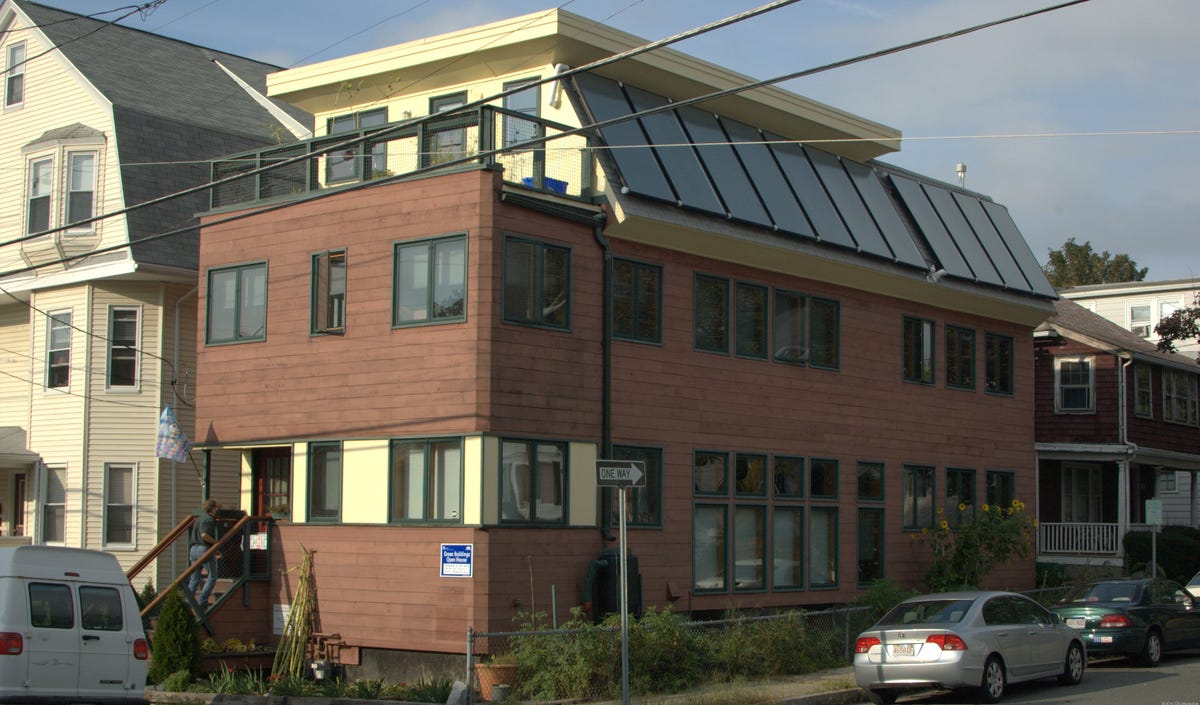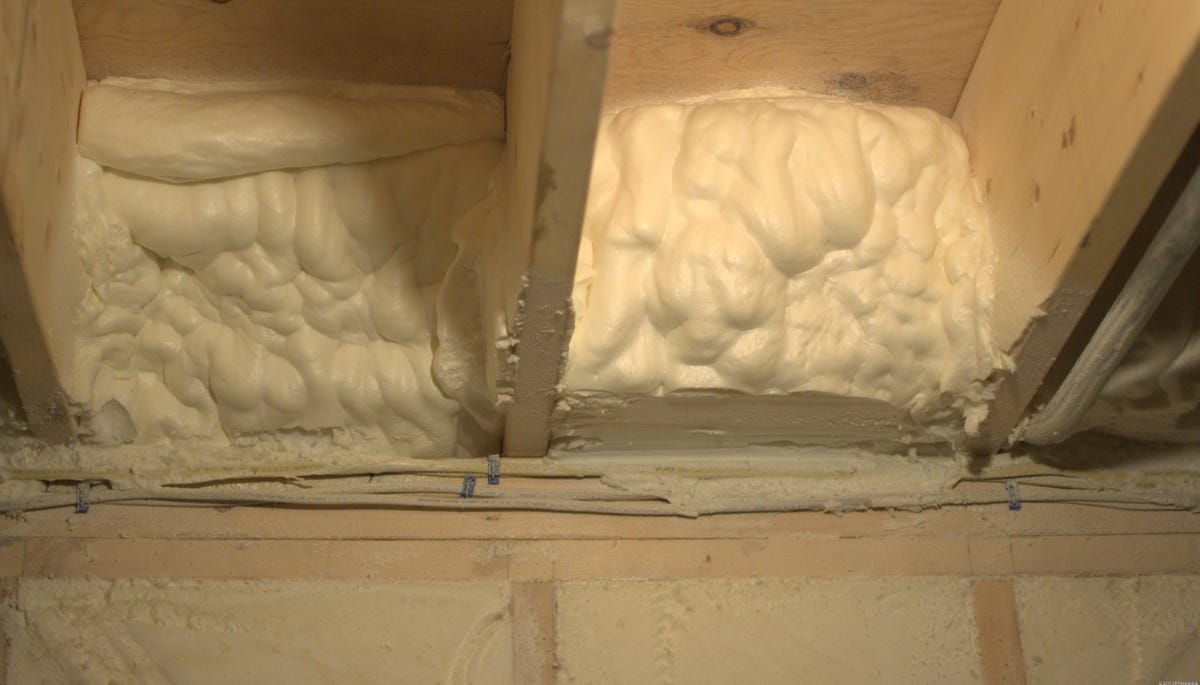Common ground on green buildings (photos)
A new single-family home and a retrofit of a multi-family home share many of the same techniques for greatly lowering energy use over typical construction.

Solar heated home
The Northeast Sustainable Energy Association (NESEA) has an annual green building tour that included this renovation in Medford, Mass. This slideshow will feature photos from this house and a new construction in Concord, Mass., which show many of the same techniques for achieving a very low-energy house. The average gas bill for this house last year was $75 a month for two apartments and the electricity bill, including air conditioning, was $41, according to owner Kevin Ring.
The main green building features are the solar hot water panels seen on the right and a very tight and well-insulated building envelope. The solar panels are used for both hot water and for radiant floor heating.
See related story, On the road to a low-energy house. Note, this house is not discussed in that article.
Thermal mass
This is the inside of one of the units of the Medford house. The south-facing side of the house has many windows to let in light, cutting down on the need for artificial lighting. In the winter, the sun is also a source of heat. This brick wall acts as a thermal mass to collect and store that heat. The floors are built with gypsum concrete to collect and store solar heat as well. The wood on the staircase landing and many other locations is fir planks from the house before the deep energy retrofit.
Superinsulated
It's not very noticeable, but the first floor bumps out slightly from the basement level. That's because the house has a three-inch layer of foam insulation board on the exterior. That superinsulation and an air-tight envelope greatly reduce the heating and cooling needs for the house.
The house has a flourishing garden and reuses rain water extensively. Water is collected, filtered with sand, and pumped into the garden. That cleaned rain water is also used to flush the toilets, cutting down on the water bill.
Mini split
An efficient heating and cooling source is an air-source heating pump, a couple of which cover most of this building's needs. Builders say that with a small building, tight and thick insulation, and on-site power production through solar panels, homeowners can achieve or approach a net zero-energy house.
Another way to ensure a tight building envelope is to use casement windows that close tightly.
Concord green
Here is a completely different building with many of the same green building techniques as the two-family home in Medford. The house is also well insulated and made air tight with spray foam. Later it will have solar photovoltaic panels put on the roof of this garage. Most of the heating and cooling will come from a ground-source heat pump, also called geothermal system. That's the same basic compressor technology as the air pump in Medford. This house will have a back-up propane heating for very cold days to supplement the primary systems.
The roof of this garage will also be covered with a reflective coating to reduce the amount of heat it absorbs, lowering the cooling load. The reflective coating won't change the color of the roof.
Ground source heat pump
Ground-source heat pumps, or geothermal heating and cooling, draws heat from the ground to heat or cool a building. A liquid circulates through coils that becomes the temperature of the ground. That liquid is compressed and turned into a gas, a process that releases heat. Then the hot gas is circulated through the top chamber where a fan blows the heat through ducting into the house. The gas is then compressed back into a liquid and sent back through the coils in the ground.

Spray foam band joist
The key to having a low-energy house is to have a very tight envelope and a lot of insulation. This new construction in Concord uses spray foam in all the walls, which was shaved down to be flush with the wood framing. This photo shows one of the crucial points to air seal: the band joist. That's the place where the house foundation and the rest of the building meet. In most homes, this is a very leaky spot so closing it off is a good way to tighten up a home. In houses that are very air tight, such as this one, there is a mechanical ventilation system, called a heat recovery ventilator, to ensure that there's a steady supply of fresh air.
Ground source pumps
Here's another visible portion of the geothermal ground-source heat pump. The system works around a fluid that is circulated through coils buried in the front yard and then sent through the heat pump. The liquid coming in from the yard comes in at the temperature of the ground. The pump converts that liquid into hotter or cooler air, using a compressor loop (the same that's used in a refrigerator). In this case, the working fluid is a combination of ethanol and water.

